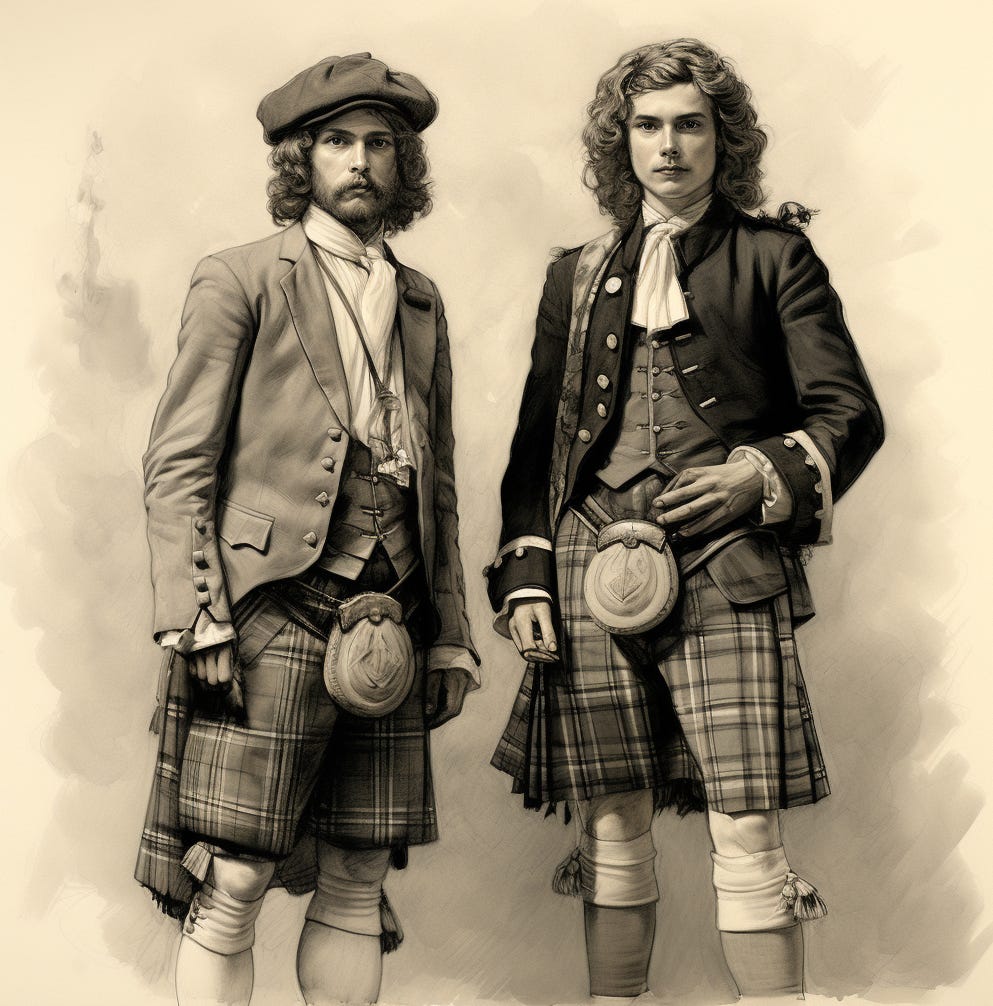Who were the Sobieski Stuarts?
In the annals of Scottish history, few characters capture the imagination quite like the Sobieski Stuarts. Brothers John and Charles, born as John Hay Allan (1797-1872) and Charles Hay Allan (1799-1880), adopted names that would enshroud their lives in an aura of mystery and romanticism. They became known as John Sobieski Stolberg Stuart and Charles Edward Stuart, purportedly in recognition of their claimed lineage from the Stuart kings.
Early Life and Ancestry Claims
The brothers were the sons of Lieutenant Thomas Allen of the Royal Navy. Their claim to be grandsons of Prince Charles Edward Stuart, while never conclusively proven, lent a peculiar allure to their story. This claim was bolstered by their striking resemblance to the later Stuart kings. Whether this ancestry was factual or fanciful, it became a central aspect of their identity.
Devotion to Gaelic Culture
The Sobieski Stuarts are celebrated for their unparalleled devotion to the Gaelic race and culture. They mastered the Gaelic language and immersed themselves deeply in the traditions, folklore, and ancient customs of the Scottish Highlands. Their method of collecting information was as diverse as it was extensive, ranging from interactions with pipers and foresters to shepherds and clergymen.
Their literary contributions were significant, spanning poems, romances, and historical sketches. These works were marked by a profound love and understanding of Gaelic culture, offering a rich source of information about the Highlands.
The Controversial 'Vestiarium Scoticum'
Perhaps their most notorious work was the "Vestiarium Scoticum." Published in 1842, this book professed to be a historical document on Scottish clan tartans, based on ancient manuscripts. The origins of these manuscripts were as exotic as they were dubious, cited to have come from locations like the Scots College at Douay in France and the monastery of St. Augustine in Cadiz.
However, the authenticity of "Vestiarium Scoticum" was hotly contested. In 1847, Professor George Skene of Glasgow University vehemently denounced it as a forgery in the Quarterly Review. Despite this, the debate over its authenticity continues to this day, with some still defending the brothers' work.
A Life of Romance and Mystery
The Sobieski Stuarts lived a life that seemed to be straight out of a romantic novel. They resided for a time on the picturesque river-island Eilean Aigas, granted to them by Lord Lovat. Here, they lived among ancient armor and relics, in an environment that mirrored their fascination with the past.
Their appearance was striking. They exclusively wore the Highland dress and the Stuart tartan, reinforcing their connection to the Scottish heritage they so adored. Witnesses often noted their noble demeanor and the remarkable resemblance of Charles, the younger brother, to Prince Charles Edward Stuart.
Religious Beliefs and Later Years
Both brothers were devout Roman Catholics, a faith they openly professed and incorporated into their writings. John, the elder brother, passed away in 1872 without issue. Charles died in France in 1880, leaving behind several descendants. His relics and possessions, which included a fascinating array of items connected to their storied past, were later sold.
The Sobieski Stuart Legacy
The legacy of the Sobieski Stuarts extends beyond their controversial claims to royal descent or the disputed authenticity of their works. They represent a profound chapter in the story of Scotland’s cultural heritage. Their devotion to the Gaelic culture and their efforts to preserve its traditions and language have earned them a place of respect and intrigue in Scottish history.
Their lives were a blend of fact and fiction, reality and romance, and it is this enigmatic blend that continues to captivate historians and enthusiasts alike. Whether viewed as romantic figures, cultural preservers, or elaborate imposters, the Sobieski Stuarts undeniably contributed to the rich tapestry of Scotland’s history.
In conclusion, the story of the Sobieski Stuarts is a fascinating one, not just for what it reveals about these two enigmatic brothers, but also for what it reflects about the times they lived in and the enduring appeal of Scotland’s cultural heritage. Their lives were a unique blend of reality and myth, and they remain, even today, as intriguing as they were in their own time. Whether they were true descendants of the Stuart line or not, their impact on the preservation and celebration of Scottish Highland culture is undeniable and continues to resonate in the annals of Scottish history.





